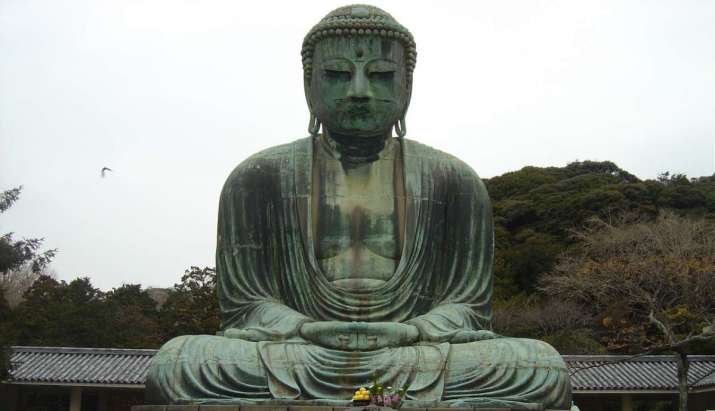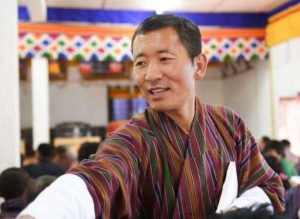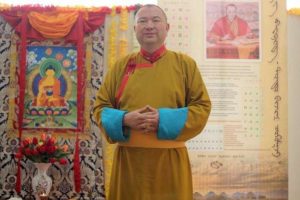
The following is a dialogue I recently had with a fellow Buddhist practitioner.
She: You believe in the Pure Land and I also believe in the Pure Land; you wish to be reborn in the Land of Bliss, and I wish for the same; you always practice Amitabha-recitation, and I recite Amitabha’s Name as well. However, you say that you are a practitioner in the Pure Land school, and I am not. I can’t see any difference . . . ?
Me: Simply put, I follow the original lineage of the Pure Land school in practicing the Pure Land teachings for rebirth.
She: I know there are many great Pure Land patriarchs and I also follow their teachings on the practice and aspiration for rebirth in the Land of Bliss. All of them ask us to recite Namo Amituofo for rebirth in Pure Land. Nothing special!
Me: Among all Pure Land patriarchs, I follow only five—Nagarjuna Bodhisattva, Vasubandhu Bodhisattva, Master Tanluan, Master Daochuo, and Master Shandao. All of them wrote commentaries to explain the three Pure Land sutras—the Infinite Life Sutra, the Contemplation Sutra and the Amitabha Sutra—and these were based on the lifeline of the Pure Land teachings: deliverance through the power of Amitabha’s 18th Vow, his Fundamental Vow. They differentiated the Pure Land Dharma from all other Buddhist teachings and clarified its unique characteristics, which are the foundation of the Pure Land school.
She: Wait a minute, do you mean the other Pure Land patriarchs didn’t?
Me: That’s right, they didn’t. They interpreted the three Pure Land sutras in conjunction with other Buddhist teachings that are not directly related to rebirth in the Land of Bliss. That is confusing.
She: But the other patriarchs also said that faith, aspiration, and practice are the “three essentials” for rebirth according to the 18th Vow, just as what we said at the beginning of our conversation. So, what’s the difference?
Me: Let me ask you a question. Do the other patriarchs and masters encourage you to mix other practices with Amitabha-recitation for rebirth?
She: Yes, of course. Apart from Amitabha-recitation, there are many causes for rebirth in the Land of Bliss, such as setting forth the Bodhi Mind, cultivating the Three Meritorious Blessings, holding precepts, subduing afflictions, and so on. All these are the basic practices of a Buddhist.
Me: Yes, here comes the key point! Those “basic Buddhist practices” for Buddhists of all aptitudes are the issue when it comes to the rebirth of an individual in the Land of Bliss. If the original Pure Land patriarchs hadn’t differentiated the Pure Land way from other Buddhist teachings, one would not know how to select the appropriate path to attain direct rebirth in the Land of Bliss. It must be a path that suits our capacities and aptitudes.
She: Excuse me, I am a bit confused. I selected the Pure Land teaching many years ago. I really want to be reborn in the Land of Bliss, so I always strive to do my best in various practices. Are you saying that I am not following the appropriate path to attain direct rebirth in the Land of Bliss?
Me: Well, let me ask you this: Did you know that the Pure Land school should be known as “a school to attain rebirth in the Pure Land in this lifetime?”
She: Really, I want to be reborn there in this lifetime, but I am not sure that I can.
Me: If you have doubts and worries about whether you can be reborn in the Pure Land in this lifetime, then I am sorry to tell you that you are not practitioner of the pristine Pure Land teaching. Do you know that the Pure Land is a teaching of Amitabha-recitation?
She: Yes, of course; as a Pure Land practitioner, I always recite “Namo Amituofo!”
Me: Great! An alternative name of the Pure Land school should be “a school to attain rebirth in the Pure Land through Amitabha-recitation in this lifetime.”
She: Fine, I have no objection to this. But what about other Buddhist practices? Are they causes of rebirth in the Land of Bliss as well?
Me: They are, but they are not specified by Amitabha Buddha in his 18th Vow, or selected by Shakyamuni Buddha and verified by the buddhas of the Ten Directions. This means that attaining rebirth through these practices is difficult. Moreover, Amitabha-recitation alone is more than sufficient for us to attain rebirth in the Pure Land in this lifetime.
She: I heard that even after we are reborn in the Land of Bliss, we need to continue to practice other meditative and non-meditative virtues in order to achieve the Perfect Enlightenment and Buddhahood. Is that correct?
Me: Not really. This is not the idea of the Pure Land school and it is also not the original intent of Amitabha to deliver sentient beings of the Ten Directions. The full name of the Pure Land school should be “a school to attain rebirth in the Pure Land through Amitabha-recitation in this lifetime for achieving Buddhahood.”
She: Do you mean that we achieve Buddhahood upon rebirth in Amitabha’s Land of Bliss? And we don’t need to cultivate various practices in the Pure Land?
Me: Perhaps it would be most appropriate to state it this way: through the vow-power inherent in our practice of Amitabha-recitation, we are already abiding in the state of non-retrogression upon rebirth in the Land of Bliss. That means it is just a matter of time until we attain full enlightenment and Buddhahood.
She: That sounds exciting! I will have to think more about the Pure Land school, and study the writings of the five Pure Land patriarchs that you mention.
Me: There is much to learn, but remember that Amitabha-recitation is the “karma of assurance of rebirth” as taught by Master Shandao, the de facto founder of the Pure Land school. Please always recite “Namo Amituofo” while walking, standing, sitting, and lying down for the remainder of your life.
She and I: “Namo Amituofo!” See you soon in the Land of Bliss!











